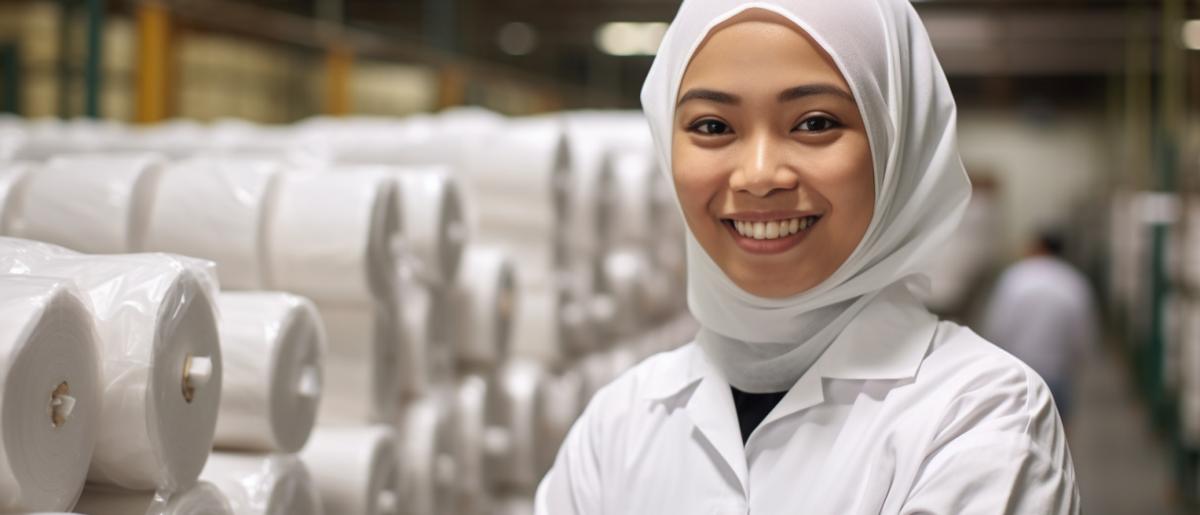

Sanitary Product Manufacturers in Australia often rely on equipment finance to support their operations and meet the growing demand for their products. Equipment finance plays a crucial role in providing the necessary funds to purchase or lease the machinery and equipment needed in the manufacturing process. For Sanitary Product Manufacturers, having the right equipment is essential for maintaining high production efficiency and ensuring product quality. Advanced machinery and equipment enable manufacturers to increase their output, streamline their processes, and enhance overall productivity. However, acquiring and upgrading equipment can be a significant financial burden for these businesses. This is where equipment finance comes in. It offers Sanitary Product Manufacturers an effective solution to overcome the financial obstacles of acquiring new equipment. With equipment finance, businesses can obtain the necessary funds to purchase or lease equipment without having to bear the full cost upfront. Instead, they can spread the repayments over an agreed period, making it more affordable and manageable for their cash flow. Additionally, equipment finance provides flexibility and adaptability to businesses in the rapidly evolving sanitary product industry. As technology advances and market demands change, manufacturers may need to upgrade or replace their equipment to stay competitive. Equipment financing allows them to access the latest machinery and technology without depleting their working capital. In the following sections, we will delve deeper into the various aspects of equipment finance for Sanitary Product Manufacturers. We will discuss different financing options, advantages, and considerations, and even provide insights on how to use an equipment finance calculator to assess the financial impact of your investment. So, let's explore the world of equipment finance and unlock its benefits for your business.
Compare over 40+ lenders with one application.
Equipment finance is a type of funding specifically designed to assist Sanitary Product Manufacturers in Australia in acquiring the necessary machinery and equipment for their operations. It offers a tailored financial solution that helps businesses overcome the upfront expenses associated with purchasing or leasing equipment. Equipment finance can be obtained through various channels, such as banks, financial institutions, and specialist lenders. The process typically involves an application where the business outlines its equipment needs and provides relevant financial information. Once approved, the funds can be used to purchase or lease the required equipment. This can include machinery for manufacturing sanitary products, packaging equipment, conveyors, or any other equipment necessary for the production process. Equipment finance generally involves a repayment plan, where businesses repay the borrowed funds over an agreed period. The repayment structure can vary depending on the chosen financing option, such as hire purchase agreements, finance leases, or chattel mortgages. Each option has its own specific terms and conditions, including interest rates and repayment terms. Importantly, equipment finance is secured against the equipment being acquired. This means that in the event of non-payment, the lender has the right to repossess the equipment to recover their funds. This security allows lenders to offer more competitive interest rates compared to unsecured loans. Overall, equipment finance plays a crucial role in helping Sanitary Product Manufacturers in Australia access the necessary equipment to thrive in the industry. It provides a practical solution for businesses to invest in their operations without significant upfront costs.
Learn about eligibility and how to apply.
Sanitary Product Manufacturers can leverage equipment finance to acquire a wide range of essential machinery. This includes manufacturing equipment, conveyors for efficient material flow, and automated packaging machines to streamline the packaging process. Equipment finance enables businesses to invest in the equipment needed to enhance productivity and meet industry standards.
Here are some common types of equipment Sanitary Product Manufacturers can purchase with equipment finance:
Machinery for Sanitary Product Manufacturing
This category includes equipment specifically designed for the manufacturing process of sanitary products, such as automated assembly machines, cutting machines, and packaging equipment.
Conveyors
Conveyors are essential for efficiently moving materials and products throughout the production line. They help streamline the manufacturing process and ensure smooth and continuous flow.
Mixing and Blending Equipment
Mixing and blending equipment is crucial for achieving the desired consistency and quality of sanitary products. This can include agitators, blenders, and mixers.
Labeling and Printing Equipment
Labeling and printing equipment allows manufacturers to print product information, barcodes, and labels onto the packaging materials. This equipment ensures accurate and professional labelling.
Automated Packaging Machines
Automated packaging machines help streamline the packaging process by automatically bagging and sealing sanitary products. These machines enhance efficiency and reduce manual labour.
Testing and Quality Control Equipment
Testing and quality control equipment ensures that sanitary products meet the required standards and specifications. This can include equipment for measuring dimensions, performing leak tests, and conducting compliance cheques.
Material Handling Equipment
Material handling equipment, such as forklifts and pallet jacks, is essential for efficiently moving raw materials, finished products, and supplies within the manufacturing facility.
Waste Management Equipment
Waste management equipment assists in properly disposing of and managing waste generated during the manufacturing process. This can include waste compactors, shredders, and recycling equipment.
Environmental Control Systems
Since sanitary product manufacturing requires specific environmental conditions, equipment for temperature control, ventilation, and humidity control may be necessary.
Storage and Warehouse Equipment
Storage racks, shelves, and other warehouse equipment are crucial for efficiently storing and organising raw materials, finished goods, and packaging materials.
Sanitary Product Manufacturers can leverage equipment finance to fuel their growth and enhance operations. They can upgrade manufacturing machinery, expand production capacity, introduce automation, improve packaging equipment, implement quality control systems, and invest in research and development. Equipment finance provides the means to drive innovation, increase efficiency, and meet market demands.
Here are some common reasons Sanitary Product Manufacturers use equipment finance for growth:
Upgrading Manufacturing Machinery
Sanitary Product Manufacturers can use equipment finance to upgrade their manufacturing machinery, incorporating advanced technologies to improve production efficiency and product quality.
Expanding Production Capacity
By obtaining equipment finance, manufacturers can invest in additional machinery and equipment to expand their production capacity, meeting the increasing demand for sanitary products.
Introducing Automation
Automation plays a vital role in streamlining production processes. With equipment finance, manufacturers can introduce automation technology, reducing manual labour costs and enhancing productivity.
Investing in Packaging Equipment
Equipment finance enables manufacturers to invest in advanced packaging equipment, improving packaging efficiency, reducing errors, and enhancing the overall presentation of their sanitary products.
Implementing Quality Control Systems
Sanitary Product Manufacturers can use equipment finance to acquire quality control equipment, ensuring that products meet the required standards and minimising defects in the manufacturing process.
Enhancing Research and Development
With equipment finance, manufacturers can invest in research and development equipment, allowing them to innovate and develop new sanitary products tailored to market needs.
Improving Material Handling
Equipment finance can be utilised to improve material handling systems, such as investing in forklifts, conveyors, and storage equipment, streamlining the flow of materials throughout the manufacturing facility.
Upgrading Environmental Control Systems
Sanitary Product Manufacturers can use equipment finance to upgrade environmental control systems, ensuring optimal conditions for production, including temperature control and ventilation.
Implementing Sustainable Practices
By acquiring specialised equipment through equipment finance, manufacturers can implement sustainable practises such as waste management systems and energy-efficient equipment.
Enhancing Workplace Safety
Equipment finance enables manufacturers to invest in safety equipment and systems, ensuring a safe working environment for employees and meeting industry regulations.
Calculate your repayment estimates and more.
Equipment finance for Sanitary Product Manufacturers in Australia brings several advantages, enabling them to secure the necessary equipment for their operations. Here are some of the advantages:
Increased Production Efficiency
By utilising equipment finance, Sanitary Product Manufacturers in Australia can acquire the latest and technologically advanced machinery necessary for their production processes. This enables them to increase production efficiency, automate repetitive tasks, and reduce manual labour, resulting in higher output and improved productivity.
Cost Savings
Equipment finance allows Sanitary Product Manufacturers to obtain the necessary equipment without having to make large upfront capital investments. This frees up their financial resources, which can be allocated to other business needs such as marketing, research, and development. Additionally, equipment financing often comes with flexible payment options, allowing manufacturers to manage their cash flow effectively.
Competitive Edge
Staying ahead in the competitive sanitary product market requires keeping up with technological advancements. Equipment finance provides access to state-of-the-art machinery and equipment, enabling manufacturers to enhance product quality, offer new and innovative products, and stay competitive in the industry.
Flexibility and Upgradability
Sanitary Product Manufacturers need to stay adaptable to changing consumer demands and market trends. Equipment financing offers flexibility, allowing businesses to upgrade or replace equipment when needed, without incurring the full cost. This ensures that manufacturers can keep up with evolving industry standards and maintain their competitive edge.
When considering equipment finance for Sanitary Product Manufacturers in Australia, it's important to be mindful of a few considerations. Here are a few potential disadvantages to think about:
Financial Commitment
Equipment finance requires businesses to enter into financial agreements and commit to regular payment obligations. Sanitary Product Manufacturers need to carefully consider their cash flow and ability to meet these financial commitments to avoid any strain on their finances.
Depreciation of Equipment
Over time, equipment tends to depreciate in value. Sanitary Product Manufacturers should consider that the equipment they finance may lose value over its lifespan. It is essential to assess the expected lifespan of the equipment and its potential resale value to make informed decisions regarding equipment financing.
Limitations on Customization
When opting for equipment finance, Sanitary Product Manufacturers may have limited options for customisation. The financing agreement may require the use of specific equipment models or brands, which may not perfectly align with the manufacturer's specific requirements or preferences.
Potential Long-Term Obligations
Equipment financing agreements generally have a specific term, and early termination or equipment replacement may result in additional fees or penalties. Sanitary Product Manufacturers need to carefully consider the long-term implications of the agreement to ensure that it aligns with their business plans and growth strategies.
Sanitary Product Manufacturers in Australia have alternatives to equipment finance. They can consider lease financing for flexibility, equipment rental for short-term needs, equipment sharing or co-ownership to reduce financial burden, and explore government funding programmes for financial assistance. These alternatives provide options for acquiring equipment without the need for traditional equipment finance.
Here are some common alternatives to equipment finance:
Lease Financing
Lease financing provides an alternative to equipment finance for Sanitary Product Manufacturers. With lease financing, manufacturers can rent the equipment they need for a specific period, paying regular lease payments without the need for a long-term commitment. This option allows flexibility and the ability to upgrade equipment as needed.
Equipment Rental
Another alternative to equipment finance is equipment rental. Sanitary Product Manufacturers can rent the necessary equipment for a short-term project or on an as-needed basis. Equipment rental allows manufacturers to access the equipment without the financial commitment of ownership, making it a suitable option for temporary or seasonal production needs.
Equipment Sharing or Co-ownership
Sanitary Product Manufacturers can explore co-ownership or equipment sharing agreements with other businesses in the industry. This option allows manufacturers to pool financial resources and jointly own or share the equipment, reducing the individual financial burden and expanding access to necessary machinery.
Government Funding Programs
Sanitary Product Manufacturers can explore government funding programmes or grants specifically tailored for equipment acquisition. These programmes provide financial assistance or incentives to support businesses in purchasing the necessary equipment, thereby reducing the financial burden and promoting industry growth and innovation.
To estimate your monthly repayments and the total cost of the loan, input the loan amount, loan term and interest rate into the calculator below. This helps you plan your budget and choose the most suitable loan terms.
These helpful FAQs will help you find the answers you need. If you can't find what you're looking for, you can request a callback below.